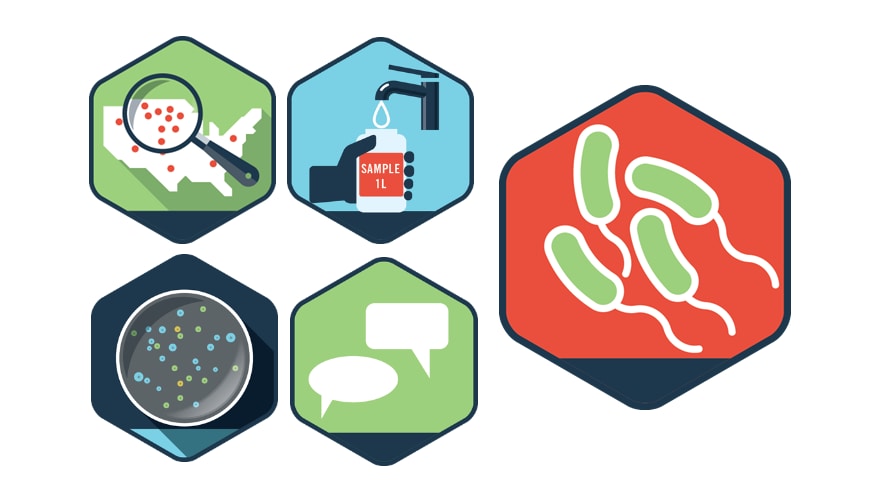Key points
- Legionnaires' disease investigations typically involve four public health fields: epidemiology, environmental health, laboratory science, and health communication.
- CDC has developed resources to help health departments investigate individual cases and outbreaks of Legionnaires' disease.
- State, tribal, local, and territorial health departments have authority over investigations in their jurisdiction.

Overview
Surveillance and reporting
Strong surveillance helps to quickly identify
- New cases
- Potential sources of exposure
- Epidemiologic links between cases
- The need for outbreak investigations
Epidemiologic investigation
Every outbreak investigation is unique and public health staff must consider many factors in determining the most appropriate response.
Environmental assessment and sampling
An environmental assessment helps to determine where Legionella can grow in a system or device and spread to make people sick.
Laboratory response
When a Legionnaires’ disease cluster or outbreak occurs, public health laboratories play a vital role in the response.
Communications resources
During outbreaks, public health staff often need to communicate through multiple channels to people with different information needs.
CDC can assist health department personnel during Legionnaires’ disease outbreaks. Follow the link below to request CDC assistance.
